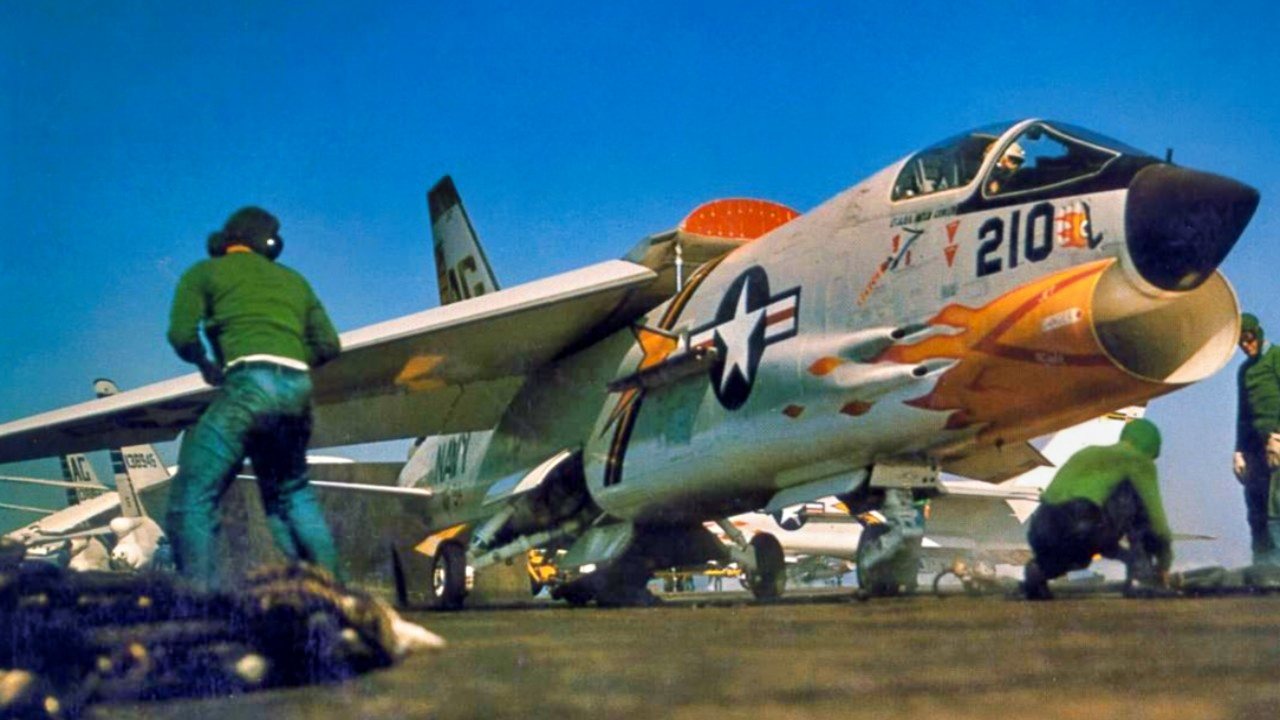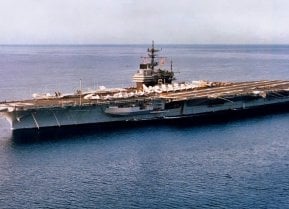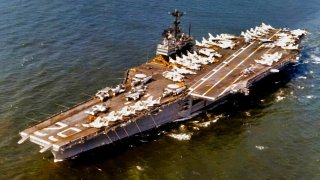USS Independence: The Mighty Aircraft Carrier That Was a Real Floating Airbase
The fourth and final ship to join the Forrestal-class was the USS Independence (CVA-62). Like her sister-ships, the Independence was designed to function in both the nuclear strike and conventional roles.
Meet the USS Independence: The critical role aircraft carriers play in the modern era has been recently exemplified by the Israel-Hamas conflict.
When the Gaza-based terror group carried out its October 7 massacre against the Jewish state, both American and Israeli officials became concerned that outside non-state actors would exploit the crisis and widen the war.
In order to deter the Lebanese-based Hezbollah group from specifically igniting a war in Israel’s north, the White House deployed a carrier strike group to the Eastern Mediterranean. Over the last month, Iranian-backed groups have carried out increased numbers of projectile and drone attacks targeting American and Israeli personnel and military assets in the region.
For this reason, the U.S. also deployed a carrier group originally intended to sail to the eastern Mediterranean to the Persian Gulf.
While the presence of these formidable carriers is not alone responsible for preventing a wider war from catalyzing, they certainly play an important role in deterring hostile actors.
A Brief Overview Of The Forrestal-Class Aircraft Carrier
For many decades, American aircraft carriers have dominated the waters. These “floating airports” provide unparalleled capabilities to the military, including offensive and defensive abilities, power projection, versatility and, air support. During the Cold War, the Navy prioritized the sophistication of its carriers in light of the growing Soviet threat. One class of ships that was derived from this era was the Forrestal-class.
Originally constructed in the 1950s, this class represented the Navy’s first-ever “super carriers” due to their large size. Following the Second World War, the Navy wanted its carriers to be able to carry the same number of airframes they were able to during wartime. However, aviation really advanced in these years and airframes were much larger than they had been before the war. For this reason, the Navy needed ships that were much larger in size than their pre-war predecessors, in order to properly fit and operate the same number of airframes.
The Forrestal-class ships weighed about 25 percent more than previous carriers and measured roughly 100 feet longer. Due to their larger size, engineers implemented an armored flight deck on the Forrestal ships, which was also a new design at the time.
The U.S. Naval Institute outlined the uniqueness and formidability of the Forrestal-class in an article. “One Forrestal, to quote her first captain, probably packs more punch than a whole World War II task force. Her 70,000-pound A3D Skywarrior compares with the 18,000-pound TBM. Her incredibly powerful steam catapults can launch the massive plane at over 140 knots, and her deck and arresting gear can handle the tenfold greater stresses of the higher landing speeds of twin-jet aircraft. In short, the attack carrier has evolved to make the potentials of today’s best weapons available to the Fleet.”
Introducing The USS Independence Aircraft Carrier
The fourth and final ship to join the Forrestal-class was the USS Independence (CVA-62). Like her sister-ships, the Independence was designed to function in both the nuclear strike and conventional roles. The supercarrier was built to lug the Douglas A3D Skywarrior bomber, the military’s newest and largest airframe, which needed ample space. CVA-62 was designed with an angled flight deck in addition to four C-7 steam catapults.
The carrier is also equipped with a sophisticated suite of processing and sensor technology, including the Saab-designed Sea GIRAFFE 3D air/surface search radar equipment. Northrop Grumman also designed the USS Independence’s onboard Integrated Combat Management System. This massive supercarrier can carry quite the fleet of airframes. In addition to the Sikorsky MH-60R/S Seahawk maritime helicopter and bomber, the USS Independence can house a variety of fighter platforms.
The USS Independence first launched in the late 1950s and primarily sailed in the Caribbean and off the Virginia Capes for her first few years in training. The ship’s first longer sail occurred in the mid-1960s when the Independence deployed for more than seven months off the coast of Vietnam in the South China Sea.

According to the Navy, this ship, among others, “participated in the first major series of coordinated strikes against vital enemy supply lines north of the Hanoi-Haiphong complex, successfully evading the first massive surface-to-air missile barrage in aviation history while attacking assigned targets, and executing, with daring and precision, the first successful attack on an enemy surface-to-air missile installation. The carrier launched more than 7,000 sorties in sustaining an exceptional pace of day and night strike operations against military and logistic supply facilities in North Vietnam. The superior team spirit, courage, professional competence, and devotion to duty displayed by the officers and men of Independence and embarked Attack Carrier Air Wing Seven reflect great credit upon themselves and the United States Naval Service.”
About the Author
Maya Carlin is an analyst with the Center for Security Policy and a former Anna Sobol Levy Fellow at IDC Herzliya in Israel. She has by-lines in many publications, including The National Interest, Jerusalem Post, and Times of Israel. You can follow her on Twitter: @MayaCarlin.
All images are Creative Commons.


